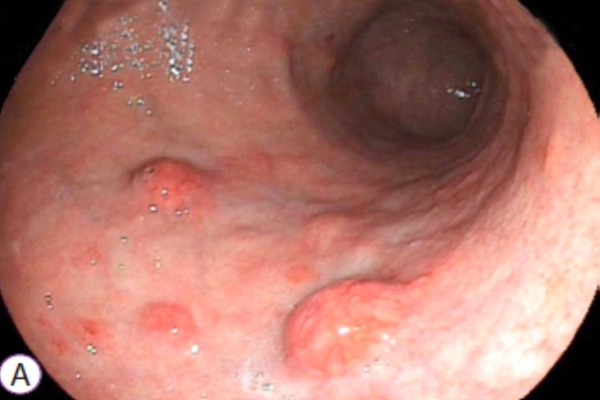
Gastric neuroendocrine tumors (NETs), previously called 'carcinoid', arise from cells called 'enterochromaffin-like cells, (ECF)' found in the lining of the stomach (mucosa). Gastric neuroendocrine tumors account for less than 2% of all gastric tumors. Gastric NETs can be well differentiated or poorly differentiated. The poorly differentiated ones are called neuroendocrine carcinoma (NEC).
The actual incidence of gastric NETs is unknown, but it has been increasing in recent years. One of the important reasons for this increase is the advances in endoscopy and imaging techniques and the increasing ease of access to these examinations. Most gastric NETs are detected incidentally during endoscopy. NETs constitute 0.6-2% of all gastric polyps.
Gastric neuroendocrine tumors are classified by the World Health Organization. This classification is based on the number of mitoses and the proliferation index called Ki-67 index. Accordingly, gastric NETs (grade, level) are graded as 1, 2 and 3. These grades are important for predicting the course of the disease and determining treatment approaches. Their prognosis is usually better than adenocarcinomas.
Neuroendocrine carcinomas (NEC) have a more aggressive course. Gastric NETs are further classified as types 1, 2 and 3. These three types may differ in their clinical behavior and potential for metastasis to the lymph nodes and/or liver. It is very important to differentiate according to these classifications in determining treatment. While some NETs may only require follow-up, others may require radical gastric surgery. For example, in a significant portion of type 1 gastric NETs, only follow-up is sufficient, while type 3 NETs require surgical treatment as in gastric cancer.
If there is metastasis in well-differentiated neuroendocrine tumors (NETs), metastatic lesions can also be removed or local ablation (burning) treatments can be applied with meticulous and accurate patient selection. However, in the presence of metastases in neuroendocrine carcinomas, systemic chemotherapy should be considered, not surgery.
Treatment of Gastric Neuroendocrine Tumors:
Type 1:
- Follow-up with endoscopy
- Endoscopic removal of NET
- Surgical treatment
Type 2:
- Similar to Type 1
- Removal of gastrinoma
Type 3:
Similar to stomach cancer
- Endoscopic treatment (ESD) in appropriate patients
- Gastric resection + lymph node dissection
Contact Us To Get Detailed Information About The Subject


